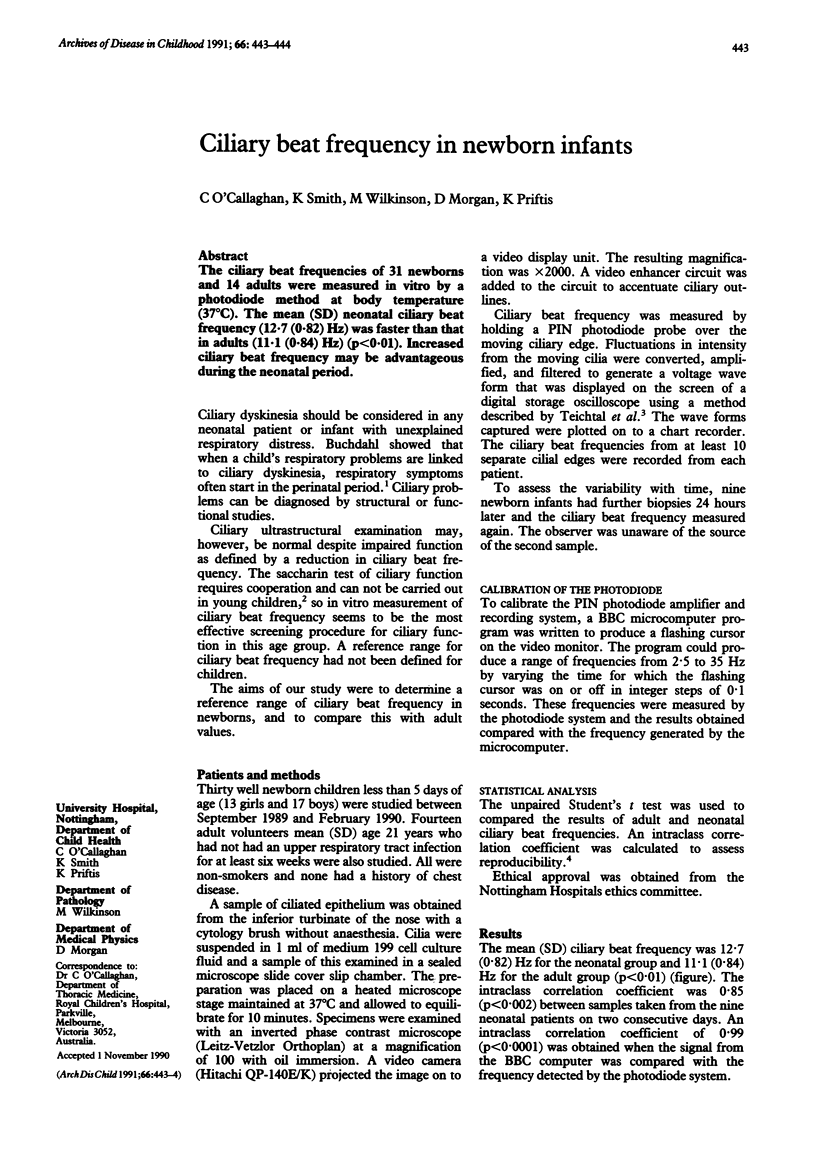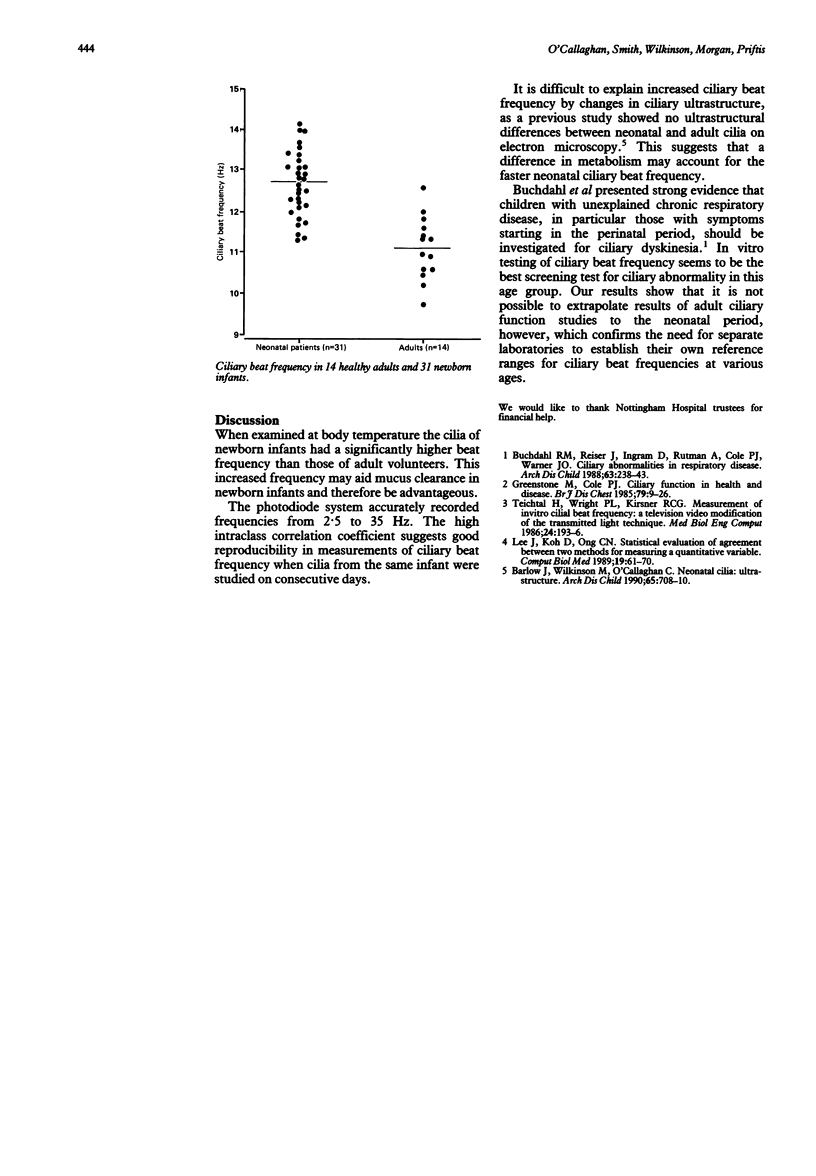Abstract
The ciliary beat frequencies of 31 newborns and 14 adults were measured in vitro by a photodiode method at body temperature (37 degrees C). The mean (SD) neonatal ciliary beat frequency (12.7 (0.82) Hz) was faster than that in adults (11.1 (0.84) Hz) (p less than 0.01). Increased ciliary beat frequency may be advantageous during the neonatal period.
Full text
PDF

Selected References
These references are in PubMed. This may not be the complete list of references from this article.
- Barlow J., Wilkinson M. J., O'Callaghan C. Neonatal cilia: ultrastructure. Arch Dis Child. 1990 Jul;65(7 Spec No):708–710. doi: 10.1136/adc.65.7_spec_no.708. [DOI] [PMC free article] [PubMed] [Google Scholar]
- Buchdahl R. M., Reiser J., Ingram D., Rutman A., Cole P. J., Warner J. O. Ciliary abnormalities in respiratory disease. Arch Dis Child. 1988 Mar;63(3):238–243. doi: 10.1136/adc.63.3.238. [DOI] [PMC free article] [PubMed] [Google Scholar]
- Greenstone M., Cole P. J. Ciliary function in health and disease. Br J Dis Chest. 1985 Jan;79(1):9–26. doi: 10.1016/0007-0971(85)90003-8. [DOI] [PubMed] [Google Scholar]
- Lee J., Koh D., Ong C. N. Statistical evaluation of agreement between two methods for measuring a quantitative variable. Comput Biol Med. 1989;19(1):61–70. doi: 10.1016/0010-4825(89)90036-x. [DOI] [PubMed] [Google Scholar]
- Teichtahl H., Wright P. L., Kirsner R. L. Measurement of in vitro ciliary beat frequency: a television-video modification of the transmitted light technique. Med Biol Eng Comput. 1986 Mar;24(2):193–196. doi: 10.1007/BF02443935. [DOI] [PubMed] [Google Scholar]


